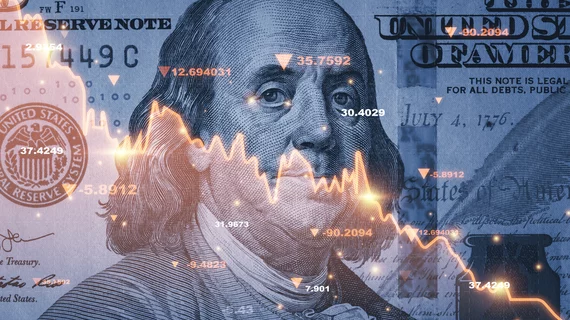Congressional Medicare advisors recommend tying radiologist pay increases to inflation
The Medicare Payment Advisory Commission—which counsels Congress on the federal program—on Thursday recommended tying radiologist and other physician pay increases to inflation.
Such a change has long been championed by the American Medical Association and other doc lobbying groups. AMA earlier this week criticized the federal government for proposing a 4.33% increase for Medicare Advantage plans while physicians face a fifth consecutive year of cuts.
MedPAC’s proposal is only advisory, and Congress has ignored its advice in the past. The Radiology Business Management Association praised the recommendation on Thursday.
“America’s physicians are facing a constant cycle of cuts, while other payment systems receive inflationary updates. This disparity jeopardizes patient access and the stability of our healthcare system,” said Kit Crancer, chair of RBMA’s Radiology Patient Action Network. “The Radiology Business Management Association and RPAN stand ready to work with Congress to protect America’s safety net programs and ensure fair, sustainable payment policies for physicians.”
Last year, MedPAC also recommended increasing physician payments by 50% of the Medicare Economic Index, a measure of practice cost inflation. However, Congress moved forward in December with a resolution that cut the conversion factor, used to calculate provider payments, by roughly 2.5%. This year’s recommendation from the commission calls for a payment update equal to MEI, minus 1 percentage point, the AMA noted. While neither fully account for the reality physicians are facing, with practice costs rising by 3.5%, both at least acknowledge it.
“When MedPAC forwards its report to Congress in March, the AMA hopes that lawmakers heed MedPAC’s analysis, concluding that Medicare payment to physician practices under current law is inadequate and downright threatening to patient access to care,” association President Bruce A. Scott, MD, said in a statement shared Thursday.
AMA, RBMA, the American College of Radiology and others have advocated for an automatic annual pay bump for physicians to account for rising costs. When adjusting for inflation, physician Medicare pay has decreased by 29% since 2001, the AMA estimates.
“The Medicare payment system is broken. MedPAC has come up with a thoughtful response that heads in the right direction,” Scott said Thursday. “Congress must prioritize Medicare reform this year. The status quo is unsustainable and unhealthy for our country.”
MedPAC also has recommended a non-budget-neutral add-on payment under the physician fee schedule for services provided to low-income Medicare beneficiaries, the American Hospital Association reported.

